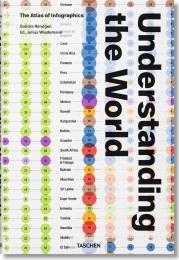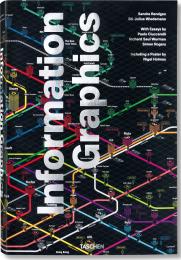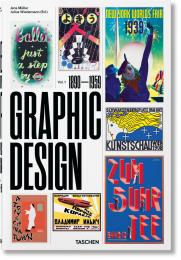A Visual History of Graphic Design. A comprehensive look at hundreds of landmark projects, industry leader profiles, and illustrated timelines for each decade
In this mighty first volume, Jens Müller traces 70 years of graphic design, designers, and developments from the late 19th century through the economic boom after World War II, spanning designs that would form the basis for further revolutions. Year-by-year spreads are combined with in-depth features on hundreds of landmark projects, industry-leader profiles, as well as visual timelines of each decade.
History is a complex business. Fortunes boom and bust, empires wax and wane, and change — whether social, political, or technological — has its winners, its losers, its advocates, and its enemies. Through all the turbulent passage of time, graphic design — with its vivid, neat synthesis of image and idea — has distilled the spirit of each age.
This book is an in-depth history of graphic design from the end of the 19th century to the ’50s. It traces the evolution of this creative field from its beginning as poster design to its further development into advertising, corporate identity, packaging, and editorial design. Organized chronologically, the volume features over 2,500 seminal designs from all over the world, 71 of which are profiled in detail besides 61 leaders in the field, including Alphonse Mucha (chocolate advertisements), Edward Johnston (London Underground logo and typeface), El Lissitzky (constructivist graphics), Herbert Matter (photomontage travel posters from Switzerland), Saul Bass (animated opening titles), and A. M. Cassandre (art deco posters).
With his sweeping knowledge of the field, author Jens Müller curates the standout designs for each year alongside a running sequence of design milestones. Meanwhile, in his introductory essay, David Jury situates graphic design from its point of origin in early printing, engraving, and lithography to striking creative developments in the 19th century. Each consecutive decade is then prefaced by a succinct overview as well as a stunning visual timeline, offering a vivid display of the variety of graphic production in each decade as well as the global landscape which it at once described and defined.
As we move on from and reflect upon the 20th century, this first volume examines the foundations of what would influence some of the fastest-changing creative fields. Combined with Volume Two — which spans from the 1960s until today — the tomes offer the most comprehensive exploration of graphic design to date and a long-overdue recognition of its enormous contribution to economics, politics, social causes, the arts, media, and the way we see the world.
The author:
Jens Müller was born in Koblenz, Germany, in 1982 and studied graphic design. Recipient of numerous national and international design awards, Müller is Creative Director of vista design studio in Düsseldorf, editor of the A5 book series on graphic design history, and author of Logo Modernism. He is a visiting lecturer at the Peter Behrens School of Arts in Düsseldorf and at the design department of the Dortmund University of Applied Sciences and Arts.
The editor:
Julius Wiedemann studied graphic design and marketing and was an art editor for newspapers and design magazines in Tokyo before joining TASCHEN in 2001. His titles include the Illustration Now! and Record Covers series, as well as the infographics collection and books about advertising and visual culture.














